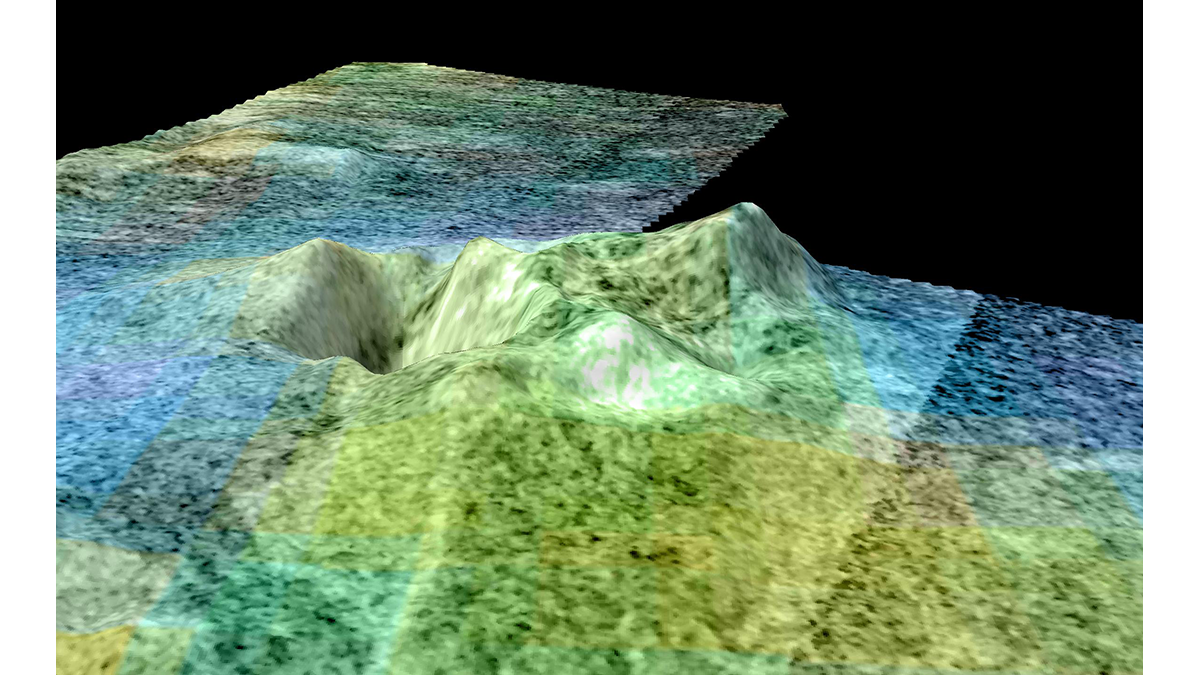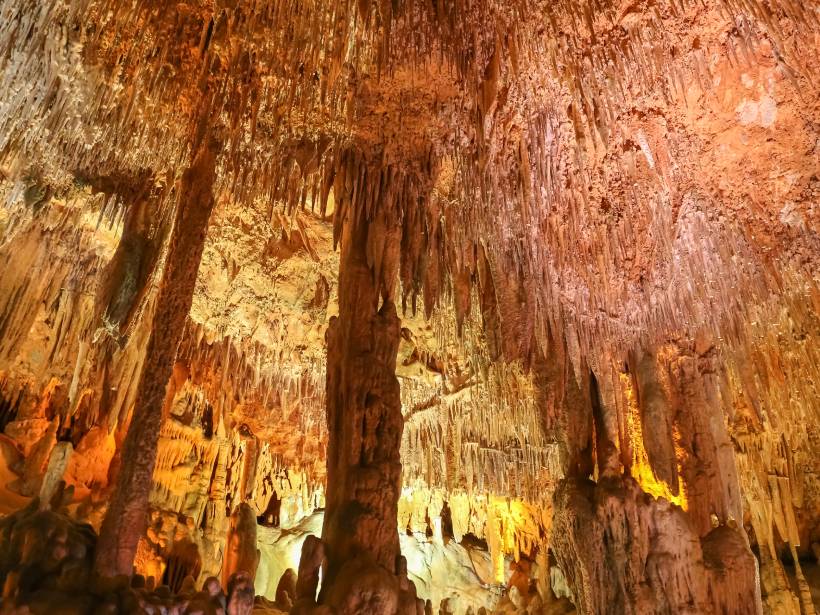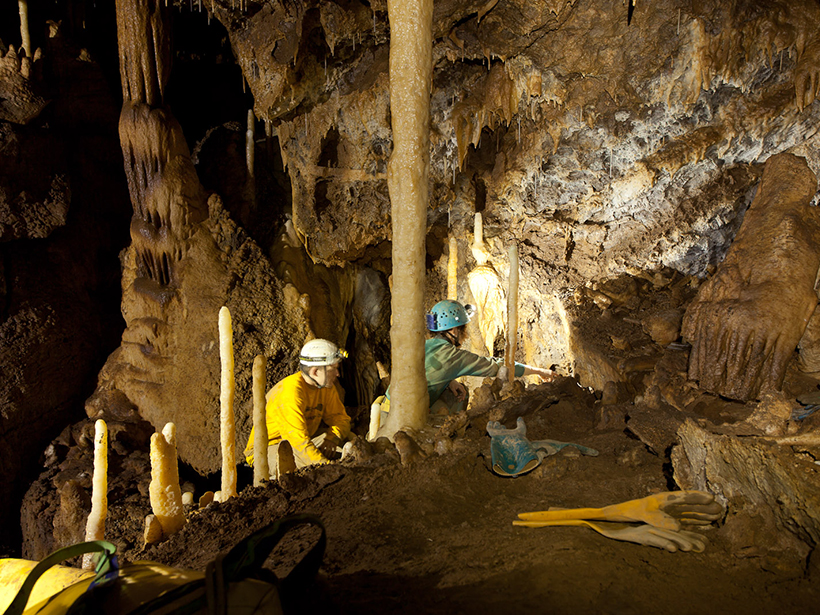More than 21,000 pits, depressions, and closed valleys on Titan may provide access to underground voids or caves.
caves
The Shape of Pits on the Moon
Three-dimensional reconstructions enable virtual exploration of pits on the Moon.
Caves Offer Temperate Hope for Future Moon Exploration
Large caves near the Moon’s equator maintain a temperate, stable daily temperature around 17°C.
Sooty Layers in Stalagmites Record Human Activity in Caves
Scientists analyzing cave formations in Turkey find layers of soot and charcoal in stalagmites, revealing that humans—and their fires—occupied caves thousands of years ago.
Planetary Cave Exploration Progresses
Terrestrial caves offer scientific and engineering insights and serve as testing grounds for future forays by humans and robots into caves on other worlds.
World’s Deepest Freshwater Cave May Be a Kilometer Deep
The Czech Republic’s Hranice Abyss is more than twice as deep as researchers thought.
El Ciclo del Carbono en el Agujero Azul Más Profundo de la Tierra
Científicos encuentran nuevos extremos mientras investigan el ciclo del carbono en el agujero azul de Yongle.
Carbon Cycling in the World’s Deepest Blue Hole
Scientists find new extremes as they research carbon cycling in the Yongle blue hole.
Past Seasons Hidden Underground
Belgian paleoclimatologists study a fast-growing stalagmite to glean insight into seasonal climate from centuries past.
How to Read Atmospheric History Written in Flowstones
Oxygen isotope ratios in cave deposits reflect past climates, but interpreting these data is not straightforward. A new study explores what these ratios really tell us.










